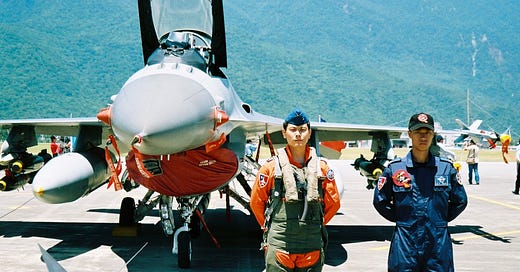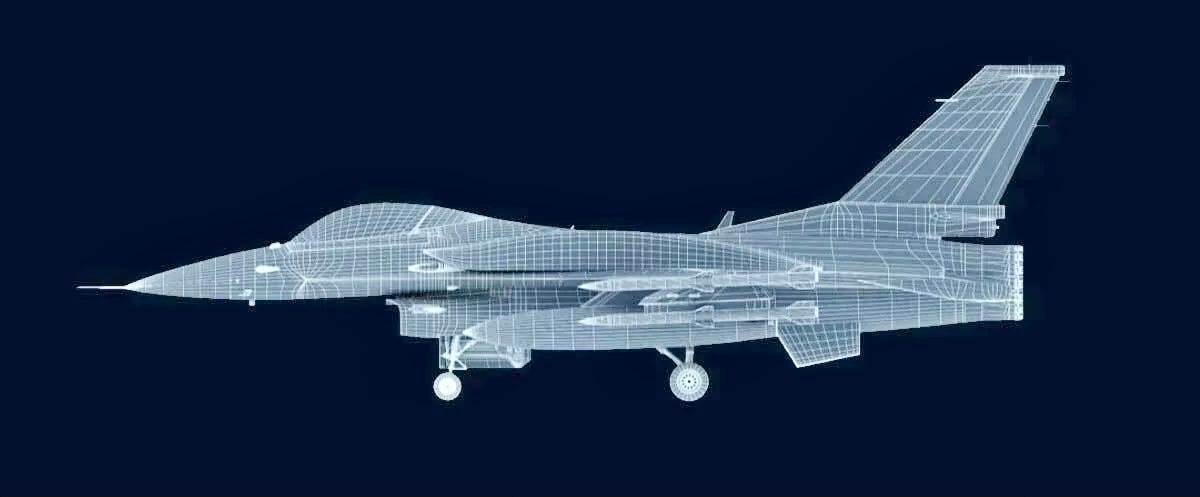China In Arms BOOKSTORE and GIFT SHOP!
Follow on Twitter
Subscribe: $5 Month/$50 Annual (unable to secure a subscription contact the bank for permission for Stripe deposits).
16 September 2024 (Monday)
Viper Shield for Taiwan F-16Vs
AN/ALQ-254(C)1 All-Digital Electronic Warfare (EW) Suite
By Wendell Minnick (Whiskey Mike) 顏文德
TAIPEI - I am all for Taiwan equipping F-16s with the most sophisticated sensors and electronic warfare (EW) suites available, kinda.
Washington has been pushing Taiwan to adopt a Porcupine Strategy for about a decade now (air defense missiles and anti-ship missiles = the needles), but what Taiwan really needs is a combination, in my opinion, of both a Porcupine and Honey Badger strategy.
But let us debate that at the end of this article.
The announcement to procure the L3Harris Viper Shield AN/ALQ-254(C)1 All-Digital Electronic Warfare (EW) Suite for $1.33 billion for the new 66 F-16V fighters is impressive. They are now the baseline of all new F-16 EW sensors in the U.S.
The new F-16Vs are expected to begin delivery at the end of this year.
Currently, Taiwan has finished a $4.5 billion Peace Phoenix Rising modernization program begun in 2016 for 140 F-16A/B Block 20 to a semi-variant of the F-16V Block 70 in 2023. The upgrade replaces existing F100-PW-220 engines with F100-PW-229 engines.
These are outfitted with AN/AAQ-33 Sniper Advanced Targeting Pods, MS-110 Multispectral Imagery System, AN/APG-83 Active Electronically-Scanned Array Radar, Link 16, a helmet-mounted cuing system, precision Global Positioning System (GPS) navigation, an upgraded modular mission computer (MMC), an ethernet high speed data network, a new center cockpit pedestal display, and heavyweight landing gear.
There were also structural upgrades to the wings and fuselage that make the aircraft more capable and sustainable. It also allows for a heavier takeoff as well as increased landing weight.
The main difference between the F-16V upgrades and the new F-16V Block 70 is the powerplant: F110 General Electric Engine.
However, if any of Taiwan’s fighters, including Mirage 2000s and Indigenous Defense Fighters (IDF), can even get off the ground after China hits the island with a layered, multi-directional, ballistic missile strike on air bases, command and control hubs, and air defense missile facilities, raises questions on the Air Force’s priorities on defense vs. offense.
And for those who criticize that theory by pointing out there are alternative runways on Highway 1 and 2, please forgive my annoyance as China is well-aware of these alternative fighter runways.
If Taiwan plans pre-emptive surgical strikes on mainland Chinese military facilities than Viper Shield makes sense.
Taiwan is rumored to have two F-16 squadrons that will “go downtown”’; jokingly referred to as a “one-way ticket” given China’s air defense network.
Taiwan, currently, does not have a proactive military mindset. At least, not since the end of the Cold War and the opening of trade between Taiwan and China.
However, China did not discontinue assertive military exercises and occasional harassment; Exempli gratia: 1995-1996 Taiwan Strait Missile Crisis.
And the 2022 missile crisis:
When Taiwan fighter aircraft intercept Chinese fighter aircraft in the Air Defense Identification Zone (ADIZ), Chinese target radar lock-on or “paint” a Taiwan fighter aircraft. This causes the radar warning receiver (RWR) system’s alarm to go off in the cockpit. Taiwan pilots are not allowed to do the same. The reason? Taiwan’s military fears it will spin out of control leading to an exchange of fire power.
The Viper Shield will make it harder for Chinese fighters to lock onto Taiwan F-16s. At least, until, China figures out how to counter the new capability via Electronic Countermeasures (ECM). But then there is Electronic Counter-Countermeasures or ECCM (yeah, no kidding).
I am suspicious of the sale.
Given China’s own EW, radar, air defense, airborne sensors, will give the Viper Shield its first test against Chinese capabilities.
Something the U.S. military will no doubt learn from via post-mission analysis. Is the U.S. using Taiwan as a test-bed for the system in a hostile Chinese environment? Is that why the sale was approved?
Most likely and hopefully one that will not result in an incident over the waters of the ADIZ.
Please consult these books on China’s plethora of systems that the Viper Shield will face-off with:
Chinese Land-based Air Defense Systems.
Chinese C4I/EW Vol. 1 and Vol. 2.
Chinese Air-Launched Weapons and Surveillance, Reconnaissance and Targeting Pods.
Unless Taiwan pushes forward on a more robust offensive capability, it is an expensive system to procure.
Currently, besides an indigenous mobile Land-Attack Cruise Missile (LACM) program (frowned upon by the U.S. State Department), Taiwan’s two squadrons of F-16s for going downtown, there is very little in the way of offensive capability in the military’s tool box.
The Honey Badger seems neutered in Taiwan with Hello Kitty 7-11s.
Taiwan’s LACM program is certainly one of those, but how many are deployed is uncertain. It has been well-known that Taiwan’s indigenous Tien Kung 3 (Sky Bow) air defense missiles, fielded on Dongyin Island (just north of Matsu), have significant depth within China.














